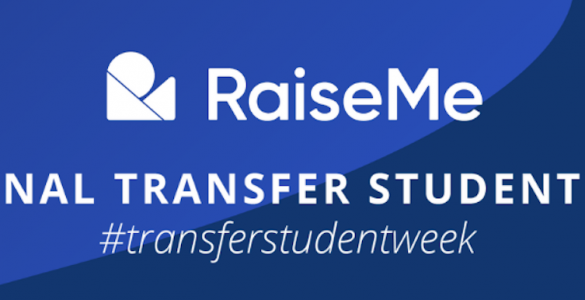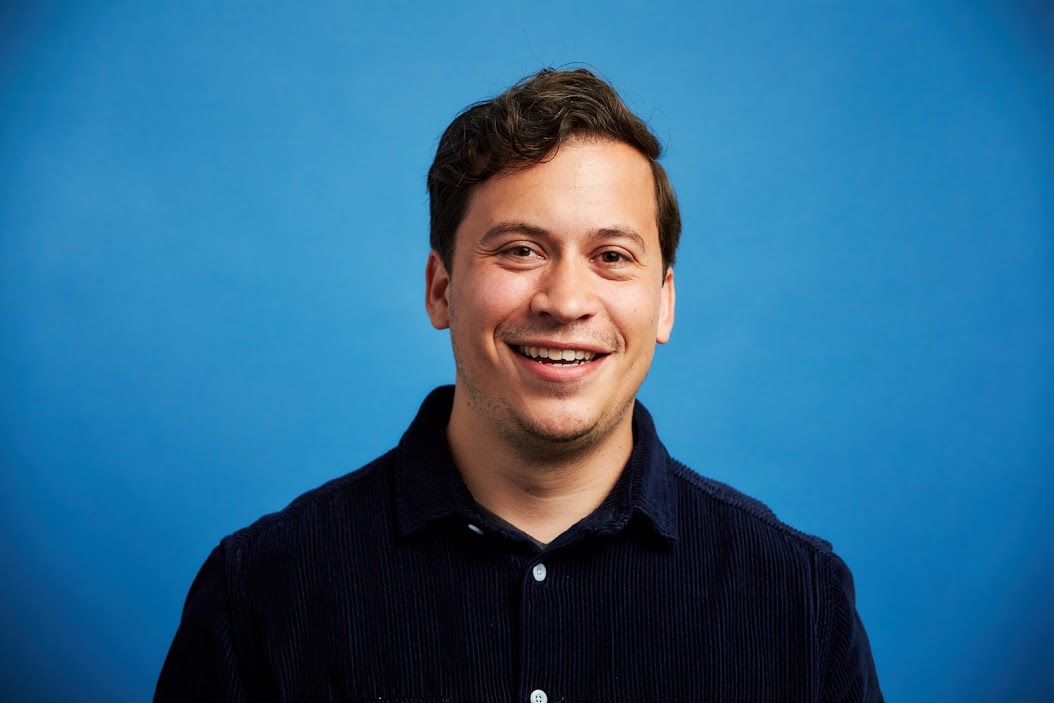ICYMI: Raise Me’s “Student Mental Health During COVID-19” Webinar Revisited
A recap of the Raise Me webinar featuring panelists from across the education landscape speaking to the supports being put in place to address student mental health.
In case you missed it:
Students’ mental health is top of mind right now for high school and community college educators ― and also for parents and direct service workers in the nonprofit sector. The physical, social, and emotional uncertainty COVID-19 has created weighs heavily on all of us, but especially on young people who are still learning how to reconcile their feelings with such a sudden and drastic change in environment. Many of whom are still expecting themselves to outperform academically despite an ongoing national crisis.
We sat down recently with educators from different fields to have a candid discussion about how they are holding their many responsibilities during this crisis and how they are striving to center social and emotional health for students, families, and themselves. We have captured some of the highlights from our discussion here. To watch the entire webinar on replay, visit Raise Me’s Top Webinars for Educators page.
 [Image Description: Graphic features panelists from Raise Me’s “Student Mental Health During COVID-19” webinar]
[Image Description: Graphic features panelists from Raise Me’s “Student Mental Health During COVID-19” webinar]
Panelists:
- James Colón, Assistant Professor, Counseling at Northampton Community College
- Jill Cook, Assistant Director of the American School Counselor Association
- Katherine Pastor-Lorents, School Counselor and Department Chair at Flagstaff High School
- Theresa Palafox, San Diego County CSEC Response Coordinator at San Diego Youth Services
Facilitator: Laura Reisert Kalinkewicz, Associate VP of College Partnerships
Raise Me: How have your best practices and delivery methods for mental health services shifted while navigating COVID-19? And what’s been effective for you when it comes to strategies for checking in on students or following up remotely now that we have this distance between us?
James Colón: Naturally, through this pandemic a lot of things have just shifted in ways that I don’t think that we could have imagined. Primarily, my role is to do counseling, therapeutic counseling. And so, when students are referred, traditionally they come to the counseling office ― it’s completely volunteer and they self-report. Sometimes we have referrals from faculty and staff, of course, but primarily it’s the students. And obviously that has shifted in a big way because students are no longer just walking in. So our practice has sort of changed…
I’m thankful that we have an amazing faculty and staff. When we shifted online, we started talking a lot amongst each other. We needed to build sort of our relationship with each other, because we have a village of students and it’s going to take a village to help them to understand what they need to do to adjust, [to] understand the new relationships that they’re going to have to establish with each other, with the faculty, and.. [to] be able to feel safe enough to share their vulnerabilities that they’re facing right now so that we can guide them…
So it began with us, as the counseling staff, having those conversations with faculty, and being able to really listen to what their students are going through, and to reach out to the students. And we’ve done that in a few different ways. We’ve sent out numerous emails. And when we didn’t get responses we began to literally call students one by one to just check in with how they’re doing… And that was everybody at the college, making those phone calls and it began to then filter into recommendations [about] which office should [students] get in touch with? And, of course, we got an influx of students with the need for mental health services.
We had to adapt. Of course we use Zoom a lot. Additionally, we use a text messaging service called OhMD, and which is HIPAA compliant in order for the students to be able to have confidential conversations. But also, naturally, there are some students who feel insecure about Zoom or feel insecure about having conversations over FaceTime and such. So OhMD allowed students to sort of have “password protection.” It was a free service that we could use to maintain constant and consistent communication with the students so that when we had our individual sessions, once a week, it could really be a combination of smaller conversations that we’ve had throughout the week.
Jill Cook: What makes the situation [around COVID-19] so unique is that it’s not isolated to a community or a city. This is something we’re all experiencing. So I think that really has to be fundamental to our approach to all of this is ― that we’re all impacted and impacted in different ways. So, unlike James and his role in a therapeutic setting, school counselors don’t provide therapy. They don’t do long-term counseling. A school counselor’s role is around a comprehensive program that, in a brick and mortar setting, is typically around classroom instruction, small groups, individual counseling, consultation, collaboration with school staff and other organizations. So when we went virtual school counselors initially did have a lot of concerns. Some of them were ethical. And we had lots of conversations around FERPA and lots of initial conversations around HIPAA…
So once we talked through all that initially, now what do we do? How is it [that] we can help students?
There are lots of schools doing some amazing things. In Denver, Colorado, they have something called “Coffee with Counselors” where there is a virtual space students can pop into to talk to the school counselors. School counselors are setting office hours and one of our recommendations is that it not be 8:00 AM to 4:00 PM. That is not healthy for the school counselor, quite frankly ― but that there be two [or] maybe three hours where students know they can check in with the school counselor if they need to. School counselors are developing all kinds of social and emotional learning lessons that they are delivering with a classroom teacher through virtual instruction or they’re making [it] available to students and families.
It’s about identifying emotions, knowing who you can talk to, learning coping strategies, but more important than that it’s “what do we do if we have some really serious concerns about a student?” ― which are harder to detect in a virtual setting. When you’re in a school, you can see the student is absent a lot, or they might be withdrawing from friends, or grades might be declining… There’s so many places offering tele-counseling.
And I think [COVID-19] has really forced our hand at talking about how we need to collaborate to do this work to support students. It’s not that it wasn’t going on before, but I think it’s really just raised and highlighted the issue that we’re all in this together, and we need to do this work to support students.
Raise Me: Every students’ coping mechanisms will be different. How can educators approach providing support to students through a trauma informed lens? What’s important for educators to know about trauma during this environment?
Theresa Palafox: Well, one of the most important things [I’ve noticed] throughout this pandemic, …we’ve been able to see privilege, right? Like the privilege that comes with people having access to even basic internet, basic needs and housing. Here in San Diego, there’s a large population of the homeless community and we’ve been really struggling to at least get them somewhere safe.
As for students, one of the things that I’ve noticed is that, yes, we might have our drop in center hours opened. And we might have all these resources, however; sometimes we just miss it and we don’t get to ask students what exactly they are in need of.
One of the things that our program did implement was a need-sheet and we have a needs assessment. We have incorporated many different things from food to resources to housing, and we are able to connect with them via tele-health and ask what is it that they need? And so we have been able to figure out a way that we can get those resources for them.
Our organization started using Instacart as a way to provide groceries for families who are in need of groceries and basic needs. Also, we were able to figure out how to deliver care packages. A lot of our students are not necessarily in school, some of them are in non-traditional schooling or no schools, so always remember[ing] to give them coping [strategies], whether that’s journals or art to [help them] remember that staff is still thinking of them.
Raise Me: In a community, where you’ve got a lot of folks that are used to being in a face-to-face environment and you’re in a rural environment, what have you seen students respond well to when it comes to supporting positive coping habits or when it comes to serving students in a structure that maybe isn’t really built for that community?
Katherine Pastor-Lorents: Yes, that’s a really interesting question that I think could be its own conversation. At Flagstaff High School, we service about 1,700 students that come from all over the place and we’re very close to the Navajo reservation. So it lends to a different situation right now where we have students who are secluded and isolated: no running water, no electricity, definitely not internet. The local university has tried to set up hotspots but the lack of transportation for families to even get to those locations out on the reservation or here in town tends to be barriers.
We’ve taken a slightly different approach where we really focused on mental health with our staff first. We came up with a strategic plan around this situation where every staff meeting that we have, and we meet once a week, the number one priority is staff and student mental health and wellness. That has been priority number one since March 13, which was the last day we were in person and with our students. I think that’s a really great way to go about this because we all know on this call that if we’re not taking care of ourselves, it’s hard to take care of others.
We’re learning that we have to equip our teachers with some of these resources because the students and the parents are in contact more with the teachers than the school counselors are, and so we realized really quickly that we needed to provide mental health resources to our staff.
And so every single staff meeting, a good portion of the staff meeting is videos or tips or links to different resources for the staff and we hit those first before anything else that we do.
Then we have found ourselves trying to help students and parents develop a daily schedule, because that was difficult. With parents now reaching out to the school just up in arms about “how do they motivate their student?” They’re sleeping all day. They’re staying up all night. And so we realized that we now have become this tub of information for our staff, our students, our parents and our community and organizations like the American School Counselors Association have allowed for us to have a consistent place where we can put those resources together.
…What we’re trying to do is actually equip parents. We have to equip the parents because some of them haven’t spent this much time together as a family. And the services that were at schools now are being provided for parents. So we are finding ourselves educating and giving more resources to our parents than we ever have, which is a really great thing because they now know they can come to the high school. And we’re also finding social media has been a great resource for us with students and parents for those that have accounts. We’re finding ways to capture those social media posts and get those two our families who don’t have the internet or the social media capacity.
Raise Me: We have a lot of folks who’ve written in about mandated reporting issues or serving students who are in dangerous situations in their homes and stuck there during quarantine. What are the best practices for working with students who may be in dangerous situations?
Jill Cook: School counselors [and] all educators are still mandated reporters if you are concerned about neglect or abuse. So if your school or school district has a process, you still follow that. You may not see a student in person, but if you just suspect that ― you’re still a mandated reporter. And the other piece that I’ve learned about this, in terms of if you have a student that you are concerned about harm to self or others, that because the family is likely there I’ve heard school counselors say the appropriate practices, you know, I need to talk to your mom, your dad, what adult is in your home, take your laptop to them so I can talk to them. And if that is not able to happen, that there are agencies that you can call to do a wellness check on the student and the most important thing is to get an individual to make human contact with that child.
Theresa Palafox: …Whenever you are doing tele-health with a student, always make sure to get a location, and more specifically an address. Because… if you’re going through your session.. and towards the end or whenever you start noticing that it starts escalating… Or if you build enough rapport with the client for them to share with you that they’re experiencing really high levels of depression or even suicidality, at that point, it would be okay for you to engage with [an agency]. And in order to do that, you would have to obviously give them a location. So that, I think, is one of the most important things that I’ve kept in the back of my mind every time I am engaging with my students, because that’s not something that you ask when they’re in your office. So always remember that that’s crucial information, regardless if you have an idea of whether this person might be at their home or not.
Raise Me: A lot of teachers are working with students right now who may have low motivation or who may just really be struggling right now to make sense of their environments. What practical steps can we suggest to teachers for building trust with students at a distance?
Katherine Pastor-Lorents: You know, we just encourage our teachers to imagine themselves in a student’s or parent’s position… Some parents have multiple kids at multiple levels with multiple learning platforms and it can be overwhelming. Less is more at this time. I think the constant and frequent reminders about the resources that the district and that [the] community have, this is not usually in the forefront of teachers minds. Usually they’re thinking [about] content, [about] building relationships with students. And so, you know, focusing those efforts and the constant reminders… to let them know who they can reach out to… Reminding them that we actually have a full time social worker that can help them out with some of the social, emotional, [and] mental health needs is important…
We’re encouraging teachers to do a “Question of the Day” that has nothing to do with academics like “What’s your favorite food?” or… “If you had to eat one food for three months straight, what would it be?” And just engaging the kids in nonchalant types of questions to help that normalcy come back to the conversation piece, I think is really crucial so they feel they have some tie to the school… We are encouraging staff members to record themselves doing their lessons so the students can see them and view them and feel more connected with them. Kids are used to seeing those teachers every single day or the cafeteria workers every single day. So providing that sense of community and connection…
We are asking our teachers to send us video messages and we’re posting those out to the students and parents just so they could see them and hear from them and give some encouraging, uplifting words. Those have been the most viewed on our social media platforms. The kids just yearn to see their teachers and their counselors and administrators.
So I would highly encourage to have your staff get out there…. Kids just want a sense of connection. And I think we can provide that to them by stepping out of our comfort zones a little bit and letting kids see us now and hear from us.
Raise Me: We received an excellent question on Facebook about the importance of mental health as a student outcome: Will mental well-being ever take the place of test scores or credits? We have a lot of four year institutions tuned in right now who are evaluating long standing processes, including discussion about test optional policies. For juniors and seniors thinking about four year colleges this fall and next year, what is it important for your colleagues in higher ed to know about your students’ experiences right now?
James Colón: I think that it’s important for us to realize that changes are coming. And we are trying to sort of plan ahead for those things, but there’s a lot of uncertainty. And we don’t know whether we’re going to be online or on [the] ground. We don’t know so many different things. And so we’re trying to plan… We’re setting up committees, setting up strategic plans for the future; trying to plan as much as we can with as much as we know…
It’s keeping the communication with high schools [and] trying to just keep that bridge close or short. …We are lucky enough to have some coordinators that are placed in our high schools, our feeder schools, and so we’re able to maintain that communication with them in order to kind of facilitate a process where they go through that individual as a conduit to our college. And that has helped significantly [with] weeding out a lot of miscommunication or fears that could come down the pike, but a lot of students are fearing the idea of being online in the fall. And so, where we’re at, we’re waiting to see if we’re expecting an influx or if we’re expecting a decrease [in attendance this fall]. We just don’t know. And so we’re just trying to take it day by day, but trying to keep everybody on the same page as best as possible.
Raise Me: How is uncertainty about transition, whether it’s from middle school to high school, or high school to post secondary options, impacting your students ― and what can counselors do to help?
Jill Cook: Yeah, it’s I think this is one of the things foremost on everybody’s mind. And nationally, I can say that we’re having lots of conversations with lots of groups about what school reopening may look like… I think you’re what you were talking about with mental health as an outcome is really interesting… As we talk about school reopening, and coming together again in a brick and mortar setting, or coming together partially in a brick and mortar setting… there are lots of conversations about what it can look like. But what has been very clear in the conversations we’re having is that the academics, and perhaps the deficiencies that have accumulated during this time of school closures and over the summer, while important, really must be secondary until we collectively address students’ social and emotional health, their mental health, — [and] not just students, the school staff, the families, the community.
…[A]s we think about what school will look like when we come together again, it is this piece that must be the foundation of how we think about it. And getting input: What are your needs? What providing professional development for all school staff through a trauma informed lens [might look like]? Do we have a space available for school staff to go to debrief to talk? For students to do the same? Are we going to invite community organizations into the schools to provide support to everyone — students, families, [and] staff? How will we continually revisit this to see how the needs may evolve over time? …One of [our] biggest takeaways needs to be that addressing students’, staff’s, families’, and communities’ social and emotional health needs to be paramount to the conversations we’re having as we think about what school may look like.
Katherine Pastor-Lorents: I just wrote down the word whole child. And I think, unfortunately, this pandemic has allowed a space for people to reprioritize priorities: what is most important in our communities with ourselves and our students and our schools. So, you know, trying to have a positive lens on this. [Hopefully] the people who are making these decisions… will heed the advice of the folks that are doing this work to think what better time than now to make some changes in how we educate our students, and how educators are trained, what educators are trained on, what services are provided from educational institutions, whether they’re post secondary, or secondary. I know that many people are up for the challenge to disrupt what schools were looking like… to have some courage to say “We need to do some things differently.” And let’s spend that time intentionally thinking about what is best for our students, particularly what’s best for our staff.
Jill hit the nail on the head: People are going through trauma right now. And you’re expecting them to come back [and] be like “yay, everything’s great” where you’ve lost staff members, you’ve lost students, families have lost family members, and the grieving process is so different now. We must make this a priority to make things change, or we’re going to do a disservice to all those that are involved in this process. And what better time now than to really talk about the whole child and the educator and educators’ role in in servicing what that whole child looks like from school counselors, to nurses, to school psychiatrists, to teachers, to administrators, to admissions reps, all of the people play a part in this and if we can come together I know that we can provide the resources that our students and families and staff need.
A special thank you to each of our guest speakers for joining our discussion. We were overjoyed that we could assemble such an all-star cast to share a little bit of their thoughtfulness, kindness, and expertise with our community. If you would like to listen to the rest of our discussion, don’t forget to visit Raise Me’s recorded webinars.
You may also like

National Transfer Student Week 2020: Celebrate With Raise Me!
Join Raise Me in celebrating National Transfer Student Week October 19th-23rd. This is a week to celebrate our students, connect them with resources, and to...

Join Raise Me’s Virtual Transfer Fairs: September 2020
During Raise Me’s Virtual Transfer Fair, community college students can earn micro-scholarships for visiting with colleges, right from home. Students: we know it has...

Raise Me: Everything Educators Need To Know for Back-to-School and More
A comprehensive overview for getting your high school students started with Raise Me.
